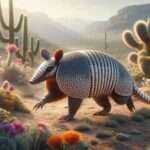Baboon: A Comprehensive Overview Scientific Name: Papio (genus) Type: Mammal Family: Cercopithecidae (Old World monkeys) Common Species: Olive baboon (Papio anubis), Yellow baboon (Papio cynocephalus), Chacma baboon (Papio ursinus), Guinea baboon (Papio papio) Conservation Status: Least Concern (for most species) Introduction Baboons are large, social primates that belong to the […]
Continue Reading






You must be logged in to post a comment.